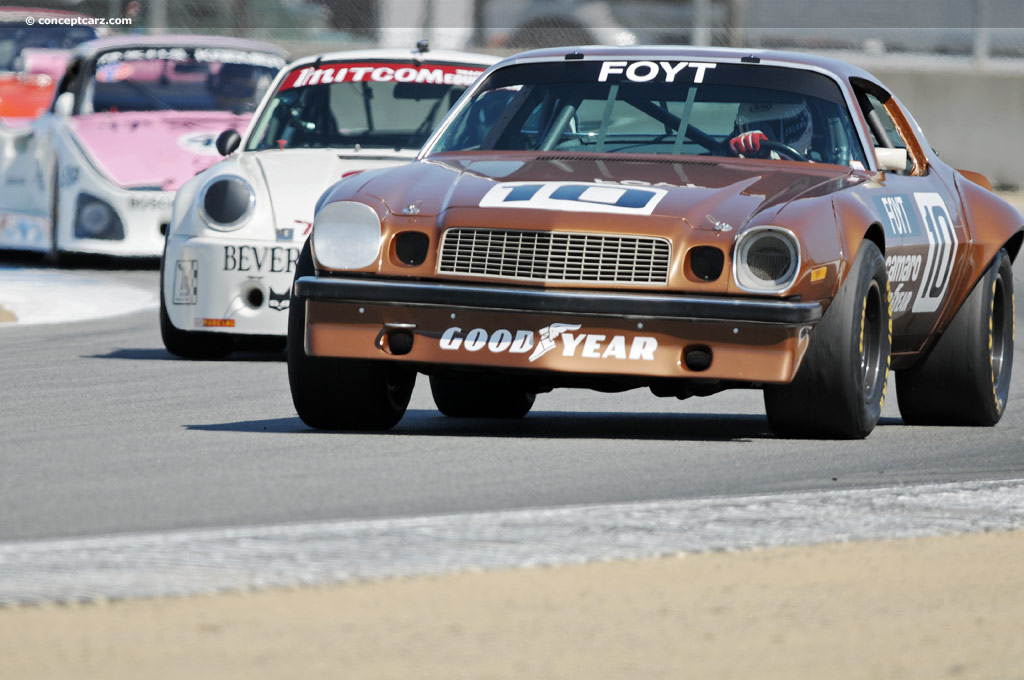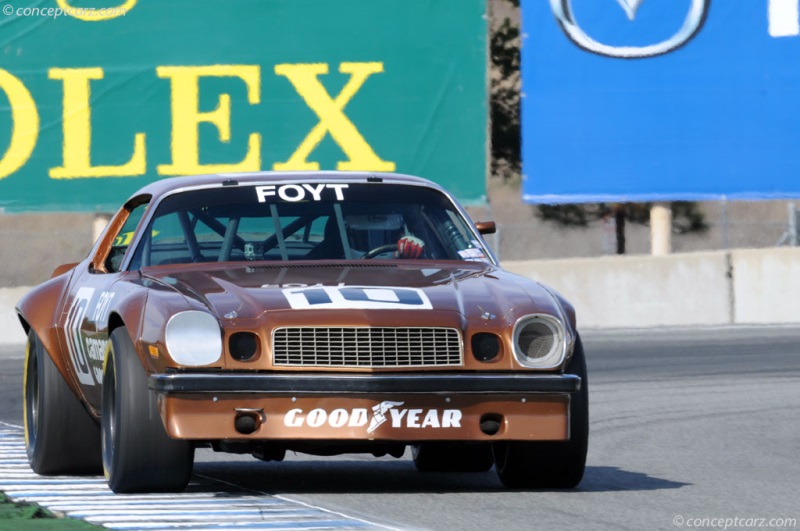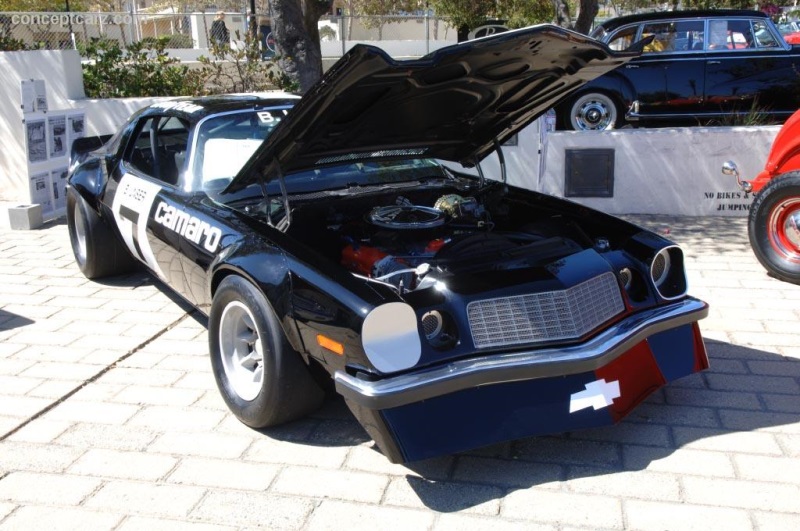1974 Chevrolet Camaro IROC Race Car Navigation
The International Race of Champions (IROC) was an automobile racing competition designed to test the world's greatest drivers' abilities. Twelve invited drivers raced in identically prepared stock cars set up by a single team of mechanics. 
Coupe
Chassis #: 1Q87H4N 221708
View info and history
Auction entries : 2The best drivers from several racing series, including NASCAR, sports car racing, and Indy cars, were invited to compete. The drivers selected were often those who had recently won at big events, including the Indy 500 and 24 Hours of Daytona. Most of the IROC races were contested on ovals.The IROC series was created and developed in 1972 by David Lockton, the developer of the Ontario Motor Speedway. The first season began in 1973, and Mark Donohue became the first driver to win the championship in 1974. The series was often dominated by drivers with a background in NASCAR competition, and they eventually became the majority of racers, initially with three drivers in the first season to seven in the final season. Porsche Carrera RSR 3-liter cars were used during the first season, with Chevrolet Camaros being used through 1989 (the IROC Championship took a break from 1980 through 1984). Dodge Daytonas were raced from 1990 to 1995, and Pontiac Trans Ams from 1996 to 2006. 
Coupe
Chassis #: 1Q87H4N221868
View info and historyThe IROC series spanned four decades and consisted of 240 events at 16 different race tracks across the United States. Bobby Unser won the second season, and A.J. Foyt won the third and fourth seasons. The first race was held on October 27, 1973, contested by twelve entrants driving the Porsche RSR, and the average speed was 101 mph. The first season consisted of four races; three of the races were at Riverside, and one was at Daytona. Mark Donohue led all 30 laps of the first race and went on to take the checkered flag. Mark won three of the four races during the inaugural IROC season.The Chevrolet Camaro was used during the second season and continued through 1980.
by Daniel Vaughan | Mar 2025
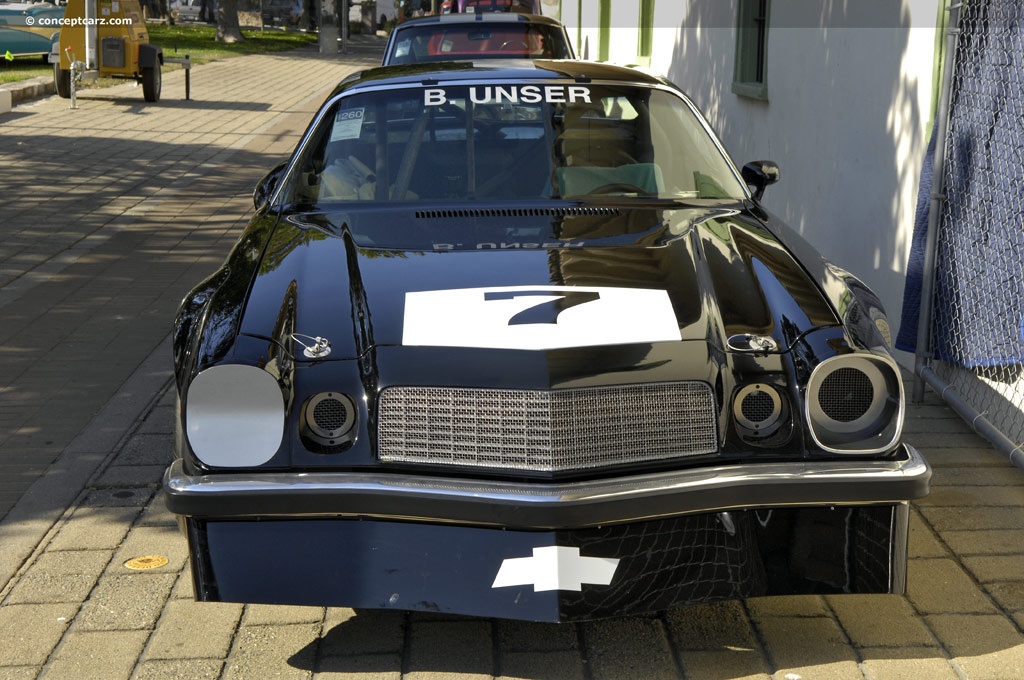
Coupe
Chassis #: 1Q87H4N 221708
View info and history
Auction entries : 2
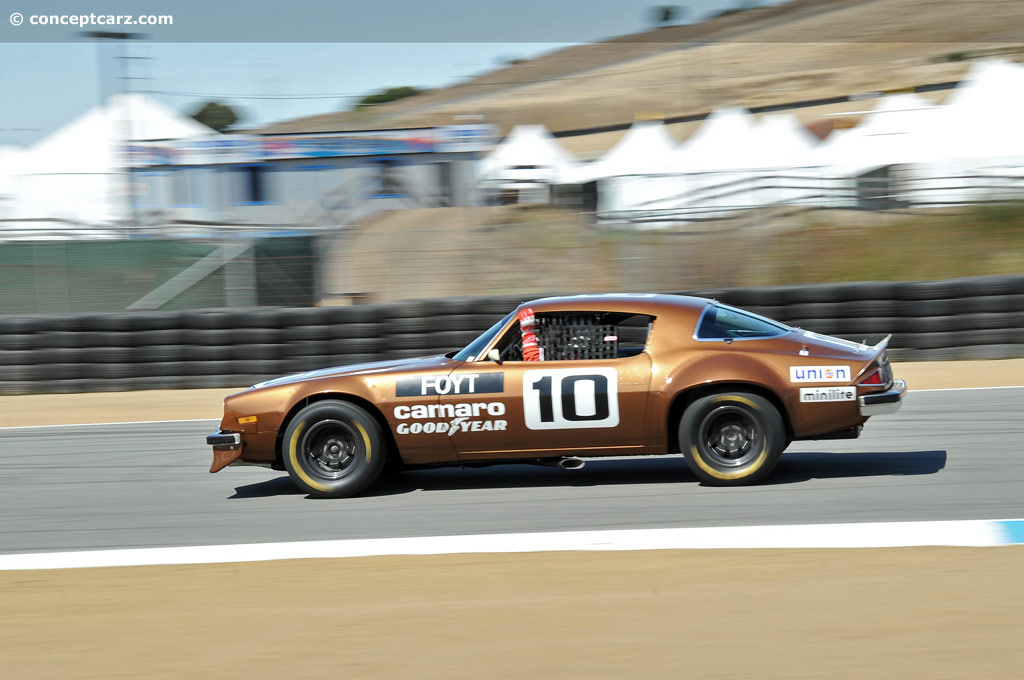
Coupe
Chassis #: 1Q87H4N221868
View info and history
by Daniel Vaughan | Mar 2025
Related Reading : Chevrolet Camaro History
The Chevrolet Camaro was introduced in 1967 as a compact car specifically built to provide competition for the highly popular Ford Mustang. This pony car was built atop of the same F-Body platform as the Pontiac Firebird, which had a similar production lifespan of 1967 through 2002. During the preproduction stages of the Chevrolet Camaro, General Motors codenamed the vehicle Panther. The name....
Continue Reading >>
Continue Reading >>
- 1974 Chevrolet Camaro IROC Race Car Menu
- Article
- Image gallery
- Valuation
- Specifications
- Profiles
1974 Chevrolet Camaro IROC Race Car Vehicle Profiles
Recent Vehicle Additions
Related Automotive News
Neil Verhagen, 15, Earns RRDC Mark Donohue Award at SCCA National Runoffs
It was announced today that Neil Verhagen was named to the 2017 Red Bull Junior Program and will drive in the Formula Renault 2.0 Eurocup series on the MP Motorsport team. httpwww.redbulljuniorteam.comarticlered-bull-junior-team-announcement-2017,...
RRDC Evening with George Follmer a Highlight of Long Beach Grand Prix
LONG BEACH, Calif. (April 15, 2016) - On April 14, in front of a capacity crowd of auto racing dignitaries, corporate executives and champion race-car drivers, Can-Am, USRRC and Trans-Am champion George Follmer was honored by the Road Racing Drivers...
American Honda Supports RRDC Evening with George Follmer in Long Beach
HILLIARD, Ohio (March 29, 2016) - American Honda Motor Co., Inc., will support the RRDC Evening with George Follmer presented by Firestone by hosting the cocktail reception on April 14 for the seventh consecutive year at the Road Racing Drivers...
George Follmer to be honored by RRDC in Long Beach
HILLIARD, Ohio (March 2, 2016) - George Follmer, the only driver to have won both the Trans-Am and Can-Am championships in one year (1972), will be honored by the Road Racing Drivers Club at the RRDC Evening with George Follmer presented by Firestone...
RRDC VOTES IN 37 NEW MEMBERS FOR 2013
HILLIARD, Ohio (Nov. 7, 2013) - Thirty-seven race-car drivers and motorsports professionals have been voted into the Road Racing Drivers Club in 2013. The group includes 13 Regular Members from the open-wheel and sports-car racing ranks, 20 Associate...
